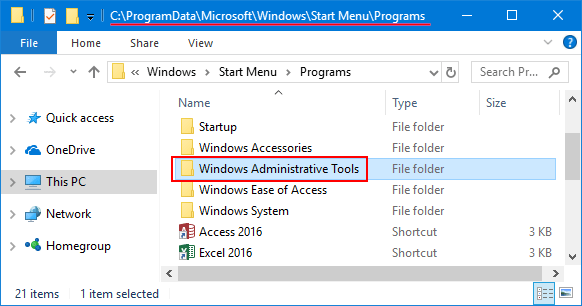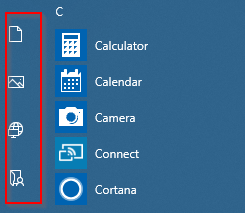

- #Windows 10 start menu folder modifications how to
- #Windows 10 start menu folder modifications install
If you turn it off, you’ll see only live tiles in the Start Menu.You’ll see the Show app list in Start menu option in the right-side pane.


Select the Start tab in the left sidebar.Or, if you don’t need the app list to pull up in the Start menu, you can disable the “Show app list in Start menu” instead. You can clear out this type of bloatware from your Start menu pretty quickly.
#Windows 10 start menu folder modifications install
It’s pretty standard for computers to come loaded with bloatware, like unnecessary apps and software, which can create a mess and make it difficult to find what you’re looking for.Įven a simple install of Windows 10 can come with useless apps like Candy Crush Friends Saga or Cooking Fever. The app list that pulls up in the Start menu can be a nuisance, especially if it came filled with pre-installed bloatware.

%ALLUSERSPROFILE%\Microsoft\Windows\Start Menu\Programs The next folder contains shortcuts for all users. These shortcuts are visible in the Start menu when you are signed in with your own account and not visible to other users of your computer. Once you hit the Enter key, the folder containing Start menu shortcuts for your current user account will be opened. Open the following folder (copy-paste the path below to the File Explorer's address bar: %AppData%\Microsoft\Windows\Start Menu\Programs You can access the Start menu folders directly with File Explorer.
#Windows 10 start menu folder modifications how to
If you are unhappy to see this area in the Start menu, here's how to remove it. Tip: The Start menu features the 'Recently added apps' list which shows the classic and Store apps you've recently installed. Items in the Start menu come with a context menu which allows performing various actions like "Pin to taskbar", " Uninstall", and so on. It is a Universal Windows Platform (UWP) app which combines the list of installed apps with Live Tiles and shortcuts pinned to the right pane. It has nothing common with the its previous implementations. In Windows 10, the Start menu is completely different.


 0 kommentar(er)
0 kommentar(er)
